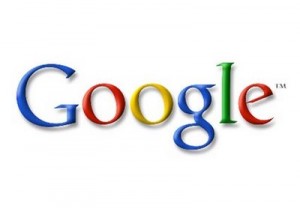 Google’s patent portfolio has been in the news a lot lately, and not in reference to the plethora of patent litigation Google has found itself in in recent years. Google expanded its patent portfolio in 2011 by acquiring more than 2,000 of IBM’s patents and added another by having its patent application for a self-driving car awarded by the USPTO. Not sure which is more impressive? Let’s spell out the recent acquisitions:
Google’s patent portfolio has been in the news a lot lately, and not in reference to the plethora of patent litigation Google has found itself in in recent years. Google expanded its patent portfolio in 2011 by acquiring more than 2,000 of IBM’s patents and added another by having its patent application for a self-driving car awarded by the USPTO. Not sure which is more impressive? Let’s spell out the recent acquisitions:
- Google acquired 188 patents and 29 patents pending from IBM, thus totaling the amount of patents acquired by Google from IBM to 2,253 in 2011. According to ZD Net, the patents cover databases, mobile phones, server infrastructures and self-driving car technologies; the new IBM IP covers areas that seem pertinent to Android as well, such as patents relating to wireless telephone systems, near-field communication and availability policies on virtual machines. ZD Net reports that Google also increased its patent portfolio by 17,000 patents and 7,000 patents pending in August 2011. Google’s General Counsel, Kent Walker, had stated on the Official Google blog:
…one of a company’s best defenses against this kind of litigation is (ironically) to have a formidable patent portfolio, as this helps maintain your freedom to develop new products and services. Google is a relatively young company, and although we have a growing number of patents, many of our competitors have larger portfolios given their longer histories.
- Google was awarded a U.S. patent for “Transitioning a mixed-mode vehicle to autonomous mode”, which provides a method to switch a vehicle from a human-controlled mode into the state where the vehicle is able to drive itself. According to an article by Sheldon Mak & Anderson,
More specifically, the patent application describes two sets of sensors. The first identifies a “landing strip” when the vehicle stops. According to Google, the landing strip could be a mark on the ground, a sign on a wall, or lines or arrows showing where the vehicle should be parked. The first sensor then activates the second set of sensors, which receives data informing the vehicle where it is positioned and where it should go.
Google’s test cars include Toyota Prius and Audi TT models, and they have driven about 160,000 miles in tests. According to a New York Times article from when the self-driving cars were announced, the cars use video cameras, radar and laser-range finders to see other cars on the road. A sensor on the roof scans 200 ft in all directions, while the cameras act as the eyes and the ears of the vehicle. Granted the test cars have not been entirely driven without human input. One would assume the cars also come equip with Google Maps, right?
Tags: Google, IBM, patent application, USPTO




You share in the PLI Practice Center community, so we just ask that you keep things civil. Leave out the personal attacks. Do not use profanity, ethnic or racial slurs, or take shots at anyone's sexual orientation or religion. If you can't be nice, we reserve the right to remove your material and ban users who violate our Terms of Service.